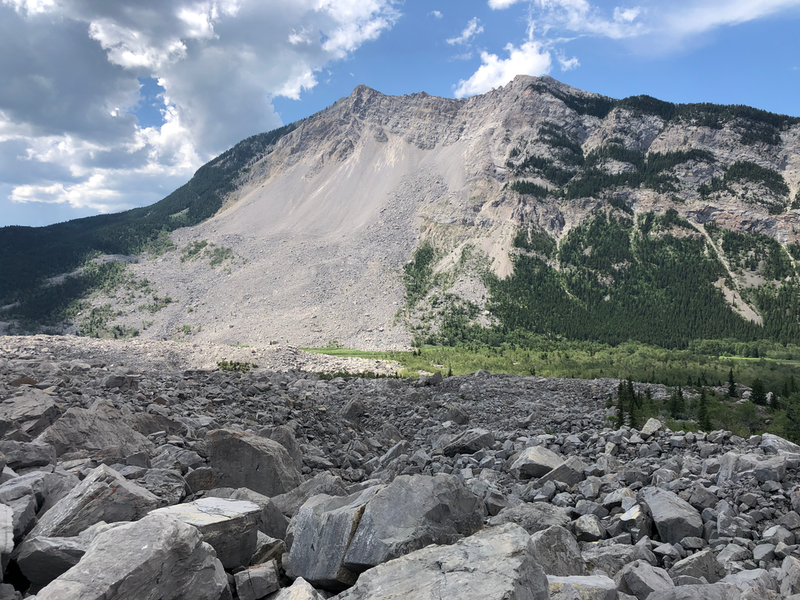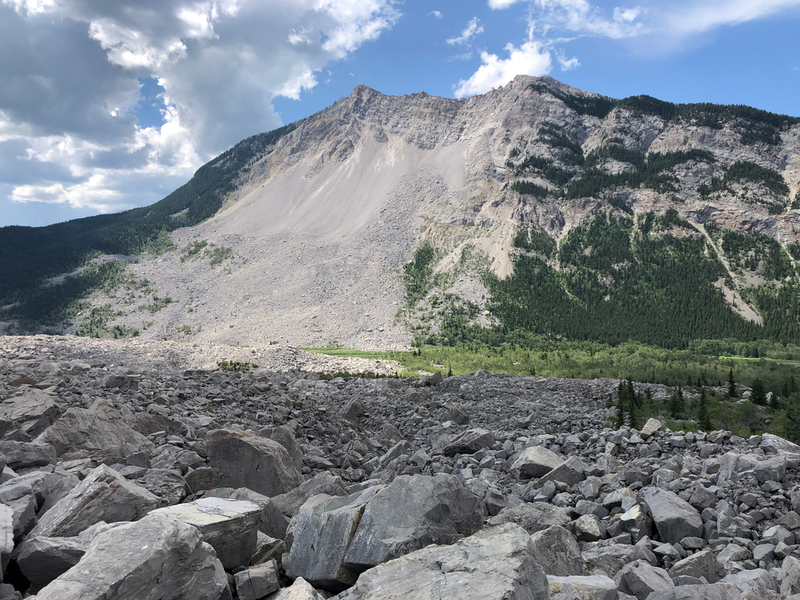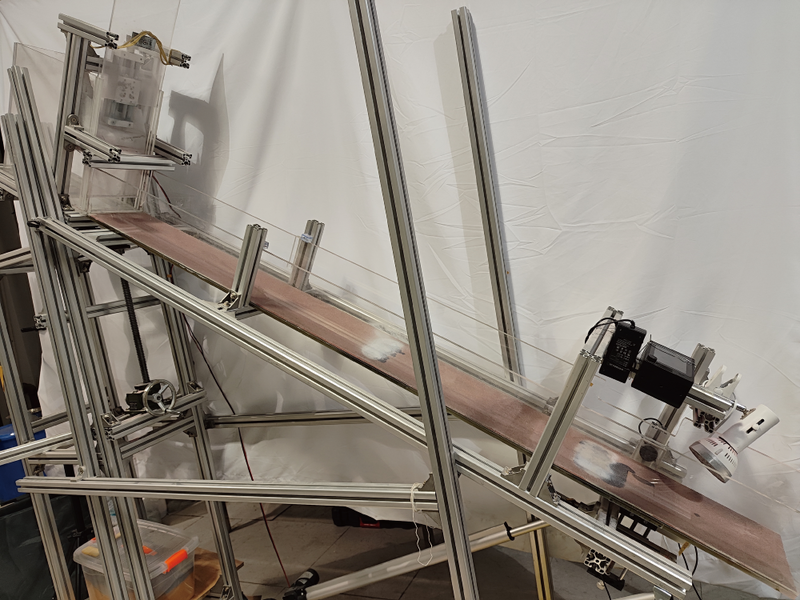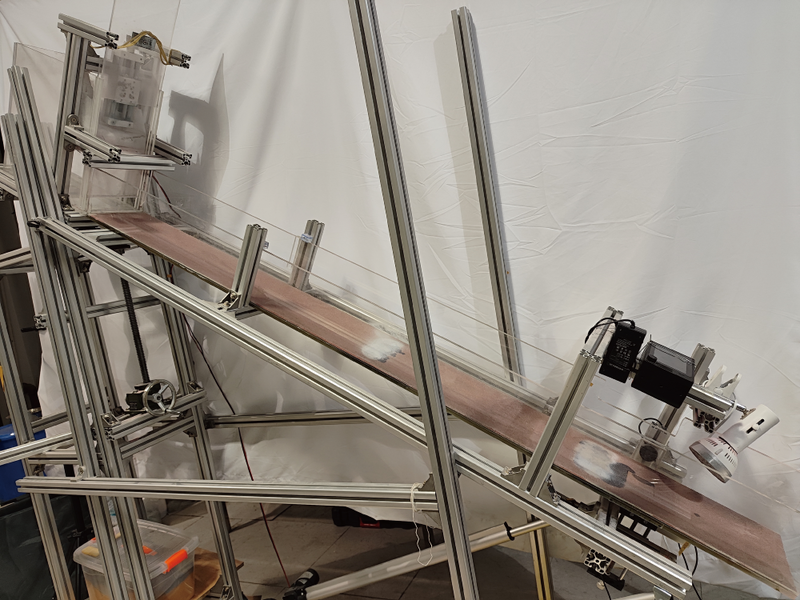Improving Models of Landslide Speed
Knowing the speed at which a landslide might overrun a road or other infrastructure can help engineers predict the potential damage and choose possible countermeasures. One way to estimate landslide speed is to study the flow of sand or other granular material down an inclined plane, but the resulting empirical models have not provided predictions that reliably match experimental data. A new study of inclined granular flows has resolved this issue by accounting for the effects of irregularly shaped grains [1]. The researchers have devised a model that accurately predicts flow speed for a range of granular materials.
The speed of a granular flow depends on several factors: the type of grains, the angle of the incline, the sliding distance, and the thickness (or depth) of the flowing material. Previous work found that thicker flows reached higher speeds, and researchers developed “flow rules” that account for this and other trends. However, some experiments found slower than predicted speeds for the thickest flows. “These results suggested that something strange is happening at large flow thickness,” says Thomas Pähtz from Zhejiang University in China. He and his colleagues set out to figure out what was behind this strange behavior.
The team performed experiments with a variety of grains (quartz spheres, natural sands, and industrial mixtures) that were all roughly 400 µm in diameter. For each trial, the selected grains were placed in a hopper at the top of a 1.7-m-long board that could be inclined at various angles. The hopper door was opened to a certain height, creating a flow with thickness between about 2.7 mm and 2.5 cm. To capture the flow speed, the researchers placed a camera at three downstream locations (0.95, 1.3, and 1.7 m).
The team realized that previous work had mistakenly assumed that the flows were “fully developed,” meaning that they had reached a final (constant) speed. This assumption had seemed justified, since spherical grains reach final speed in a relatively short sliding distance. But Pähtz and colleagues found that when the grains have nonspherical shapes, it can take significantly longer for them to accelerate up to the fully developed state.
To interpret their data, the researchers devised an expression for the flow speed, showing that it increases with distance down the incline. This expression depends on the incline angle, on the flow thickness, and on the dynamical friction coefficient, which describes a granular material’s resistance to flowing. Previous models of the flow speed included an additional friction-related parameter characterized by a threshold thickness below which the grains stop flowing. “In physics, as a rule of thumb, the fewer parameters a predictive model has, the better it is,” Pähtz says.
The simplicity of the team’s model suggests that granular flow behavior is more universal than previously thought. For example, one might have two very different materials—one having rough and round grains and the other having smooth and squarish grains—but their dynamical friction coefficients can be the same, and thus they should have similar flow speeds. In previous models, the predictions were more specific to each grain type because they included the other friction parameter. Pähtz says that further work is needed to understand why this universal behavior occurs. Such a deeper understanding could help to guide predictions for more complex flows, such as landslides and avalanches, Pähtz says.
Michel Louge, a mechanical-engineering expert from Cornell University, says that the experiments by Pähtz and colleagues complement previous studies by looking at a wider range of parameters. He stresses, however, that it will be difficult to extrapolate the results to landslides, which are often complicated by unconstrained lateral spreading and by the presence of water. Nevertheless, Tamas Börzsönyi, a granular-materials researcher from the Hungarian Academy of Sciences, says that “the presented model is a very useful step forward in understanding granular flows.” He says that granular materials “repeatedly give surprises,” so improving their mathematical description could have a benefit both in predicting geological events and in optimizing industrial processes.
–Michael Schirber
Michael Schirber is a Corresponding Editor for Physics Magazine based in Lyon, France.
References
- Y. Wu et al., “Unified flow rule of undeveloped and fully developed dense granular flows down rough inclines,” Phys. Rev. Lett. 134, 028201 (2025).







